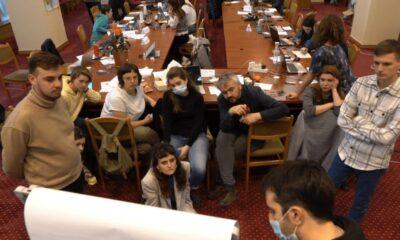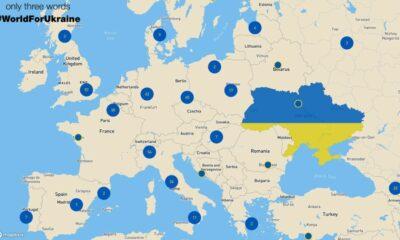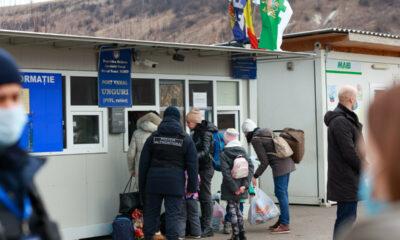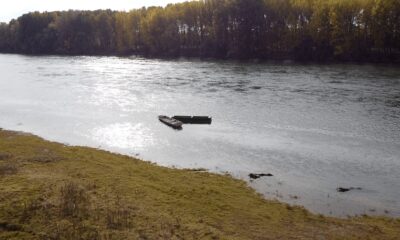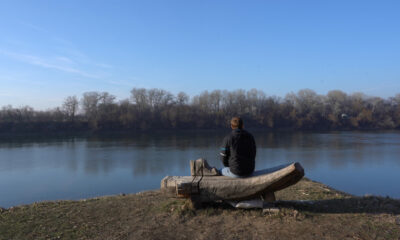Economy
Analysis: South stream, North stream increasingly seen as exceeding Gazprom’s supply capacity
Reading Time: 3 minutesOne of Gazprom’s goals with South Stream is to circumvent the Ukrainian transit system, which traditionally carries some three-quarters of Russian gas exports to Europe. The South Stream pipeline woul
Author: Vladimir Socor
One of Gazprom’s goals with South Stream is to circumvent the Ukrainian transit system, which traditionally carries some three-quarters of Russian gas exports to Europe. The South Stream pipeline would run from the Russian Black Sea coast across the seabed to Bulgaria, there to bifurcate into a southern branch toward Greece and Italy and a northern branch toward Serbia, Hungary, and Austria. Moreover, Russia has offered to build extensions of this system to several other countries along or near those routes.
Even if significant gas volumes are diverted from Ukrainian transit pipelines into South Stream, and even accounting for Turkmen gas volumes to be resold as “Russian” gas, it seems highly unlikely that Gazprom could satisfy all those would-be customer countries along South Stream routes. Russia faces the prospect of serious gas shortfalls, relative to its multiple, and growing, internal and external supply commitments from a stagnant production. Shortfalls are anticipated for 2010 and thereafter, into the presumed time-frame for South Stream to become operational. After two decades of underinvestment in exploration and production, and failure to open major new fields (while over investing in other areas), Gazprom can only expect large-scale production from new fields in Yamal and Shtokman in the latter part of the next decade.
Given this outlook on Russia’s export capacity, the South Stream project involves elements of a political and strategic bluff. It seeks to preempt the Nabucco transit route, largely duplicating that itinerary, so as to discourage investment in that project. This strategy could foreclose the EU-planned, U.S.-backed Southern Corridor for Caspian gas to Europe, unless Nabucco is built ahead of South Stream. However, full-scale construction seems unlikely in the absence of direct access to either Iranian gas (blocked by U.S. sanctions) or Turkmen gas (blocked by a Russian monopoly).
For its part, Gazprom has yet to show even a pre-feasibility study for South Stream, clarify its proposed routes, credibly estimate its cost (Euro 10 billion seems an improvised underestimate) or demonstrate that it can fill the South Stream pipeline to the planned capacity.
Germany, which has driven itself into heavy and growing dependence on Russian gas as a “strategic” choice, is now showing concern about Russia’s capacity to fill both the Nord Stream pipeline on the Baltic seabed to northern Germany and the South Stream pipeline to south-eastern and central Europe simultaneously. Both pipelines are supposed to be commissioned around 2013, before reaching their declared full capacity at 55 billion cubic meters and 31 cubic meters per year, respectively. Their resource base, however, remains doubtful within their first-stage time frames and almost certainly beyond that also.
Russian President Dmitry Medvedev was queried about this by Chancellor Angela Merkel and other German officials, not without trepidation, during his visit to Berlin on June 5 (see EDM, June 9). Medvedev, until recently the chairman of Gazprom, responded publicly that Nord Stream and South Stream are equally important projects on a European scale; and that Russia would pursue both of them “more or less synchronically” (Interfax, June 5). This is not the answer Berlin wanted to hear. Germany’s relevant business circles and the government almost certainly expected assurances that supply commitments to Nord Stream for Germany would take precedence over South Stream. Yet Medvedev’s answer seemed to play off the two sets of consumer countries against each other, for access to a commodity in limited availability.
This has indeed been Gazprom’s and the Kremlin’s tactic in negotiating with countries along South Stream’s proposed routes and neighboring countries. Bulgaria, Greece, Italy, as well as Serbia, Romania, Hungary, Slovenia, and Austria have each been offered at one time or another the status of a “hub” or the prospect of an extension from the main South Stream pipeline to their respective territories. This tactic has triggered an undeclared but visible contest among most of these countries for the best possible bilateral deal with Gazprom for future supplies of South Stream gas and storage sites.
Awareness of the limits on Gazprom’s supply capacity is a factor that can cut both ways. It can inspire a scramble for long-term supply agreements, pipeline construction projects, and the coveted “hub” status with Gazprom, whereby each country seeks to wrap up a deal ahead of its neighbors. But the prospective shortfalls in gas supply can also inspire skepticism about South Stream and aloofness from Gazprom’s manipulative negotiating processes. This has notably been Romania’s reaction. Romania and Hungary’s MOL company remain loyal to the Nabucco project. Romania’s TransGaz strongly supports MOL’s initiative, known as NETS, to interconnect gas transmission networks among the region’s countries. This could shore up each country’s bargaining position vis-à-vis Gazprom in emergency situations.
(Prime-Tass, APA, MTI, www.day.az, June 5-7; Die Presse, June 6)
Economy
Moldova will receive a disbursement of 36 million euros as part of the the Economic Recovery Plan
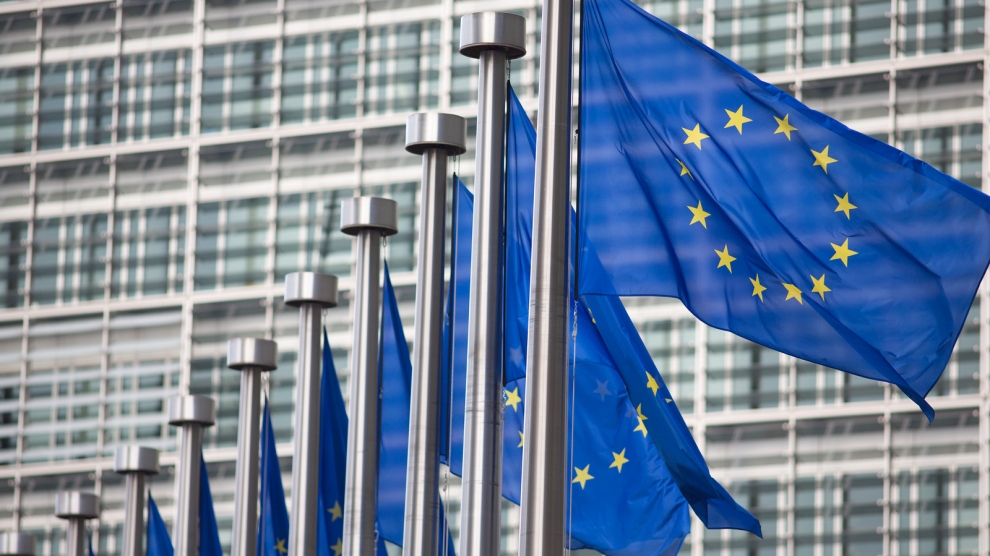
This week, the European Commission approved the disbursement of 36 million euros in grant money for the Republic of Moldova. The announcement was made by Deputy Director-General for Neighbourhood Policy and Enlargement Negotiations at the European Commission, Katarina Mathernova, who paid an official visit to the Republic of Moldova between September 13-15, together with Managing Director for Russia, Eastern Partnership, Central Asia, Regional cooperation and OSCE, at the European External Action Service, Michael Siebert.
The EU officials had meetings with President Maia Sandu, Minister of Foreign Affairs and European Integration, Nicu Popescu, Speaker of Parliament, Igor Grosu, Prime Minister of the country, Natalia Gavrilita, as well as key representatives of Government, international financial institutions and the civil society, according to a press release issued by the Delegation of the European Union to the Republic of Moldova.
Beside such topics as the EU-Moldova relations and prospects, the priorities of the reform agenda of the new Moldovan Government, preparations for the Eastern Partnership Summit at the end of the year and the Transnistrian conflict settlement, the officials also discussed the EU assistance in support of reforms and the Economic Recovery Plan for Moldova, which was announced in June with a total EU support of 600 million euros over the next 3 years.
“The first measures under the Economic Recovery Plan will shortly materialize, with the expected disbursement of 36 million euros in grant money under budget support programmes to support the authorities’ efforts to fight against the consequences of the pandemic. Moldova can count on EU’s assistance on its path to reforms and to recovery, bringing tangible results to citizens,” Katarina Mathernova stated.
The plan is based on assistance provided by the European Union through various bilateral and regional instruments, aiming to mobilize the funds in the form of grants, loans, guarantees and macro-financial assistance.
“The Economic Recovery Plan for the Republic of Moldova involves much more, not just this financial support provided immediately. It must help digital transformation, strengthen infrastructure, energy efficiency, education and support small and medium-sized enterprises,” the EU official also said.
As Prime Minister Natalia Gavrilita informed, “The Economic Recovery Plan and the 5 flagship initiatives for Moldova in the Eastern Partnership will directly contribute to the reform and consolidation of institutions, stimulate long-term socio-economic development, bring direct benefits to citizens, and unleash new economic opportunities through promoting the green agenda and digitization. Small and medium-sized enterprises (SMEs) have been hit hard by the crisis. Promoting and diversifying access to finance and reducing collateral requirements will be essential in supporting economic operators. We are grateful to the EU partners who will launch two programs to support 50 000 independent Moldovan SMEs to adapt to the new conditions.”
President of the Republic of Moldova, Maia Sandu, welcomed the decision of the European Union to disburse about 745 million lei in grant money, as the official page of the President’s Office announced. “EU support comes after a long period of freezing of European assistance, caused by former governments. We managed to relaunch the political dialogue with the European Union and resume financial assistance. The Republic of Moldova is gradually regaining the trust of its strategic partners. This European support is also a signal of encouragement for the new Government team in its commitment to clean up the institutions, fight corruption and launch development programs in the country,” said Maia Sandu.
Photo: unknown
Economy
Romania and Moldova signed a partnership memorandum pledging to cooperate in promoting their wines
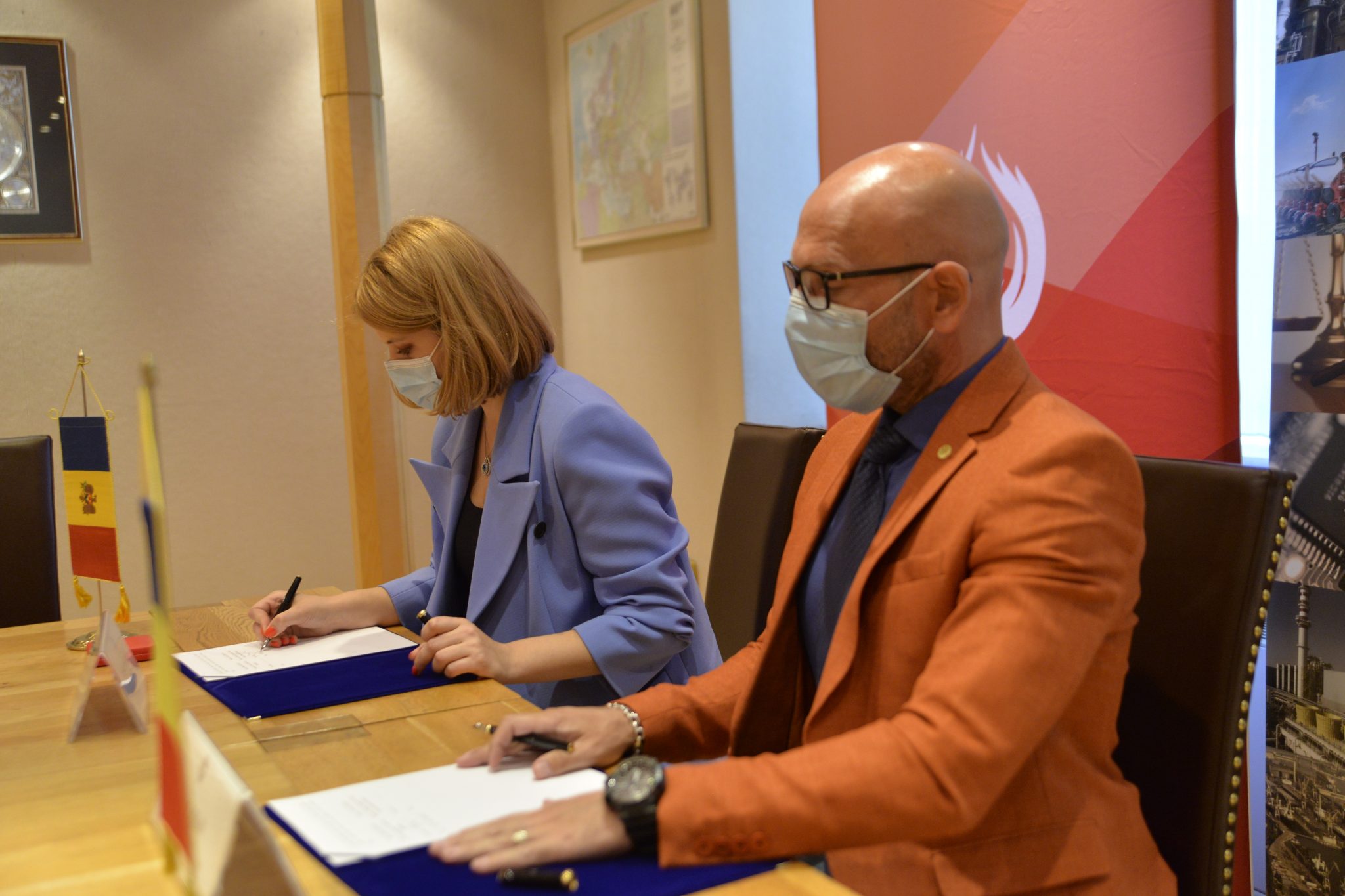
The Chamber of Commerce and Industry of Romania (CCIR) and the National Office for Vine and Wine (NOVW) of the Republic of Moldova signed, last week, a memorandum of cooperation on organizing joint promotional activities in the markets of common interest, as the CCIR announced.
China, Japan or the USA are just some of the markets targeted by the Romanian and Moldovan institutions. The memorandum also involves advertising activities for wines from common indigenous varieties, promoting the oeno-tourist region, developing a tourist route in the two states, exchange of experience, study visits, and mutual support in identifying new export opportunities. “We are very confident that this collaboration between our organizations will lead to sustainable economic growth and a higher degree of well-being among Moldovans and Romanians,” claimed Deputy Secretary-General of CCIR, Bogdan Visan.
On the other hand, Director of the NOVW, Cristina Frolov, declared that no open competition with Romania is aimed at the governmental level of the Republic of Moldova. “This request for collaboration is a consequence of the partnership principle. Romania imports 10-12% of the wine it consumes, and we want to take more from this import quota. Every year, the Romanian market grows by approximately 2.8%, as it happened in 2020, and we are interested in taking a maximum share of this percentage of imported wines without entering into direct competition with the Romanian producer,” the Moldovan official said. She also mentioned that Moldova aims at increasing the market share of wine production by at least 50% compared to 2020, and the number of producers present on the Romanian market – by at least 40%.
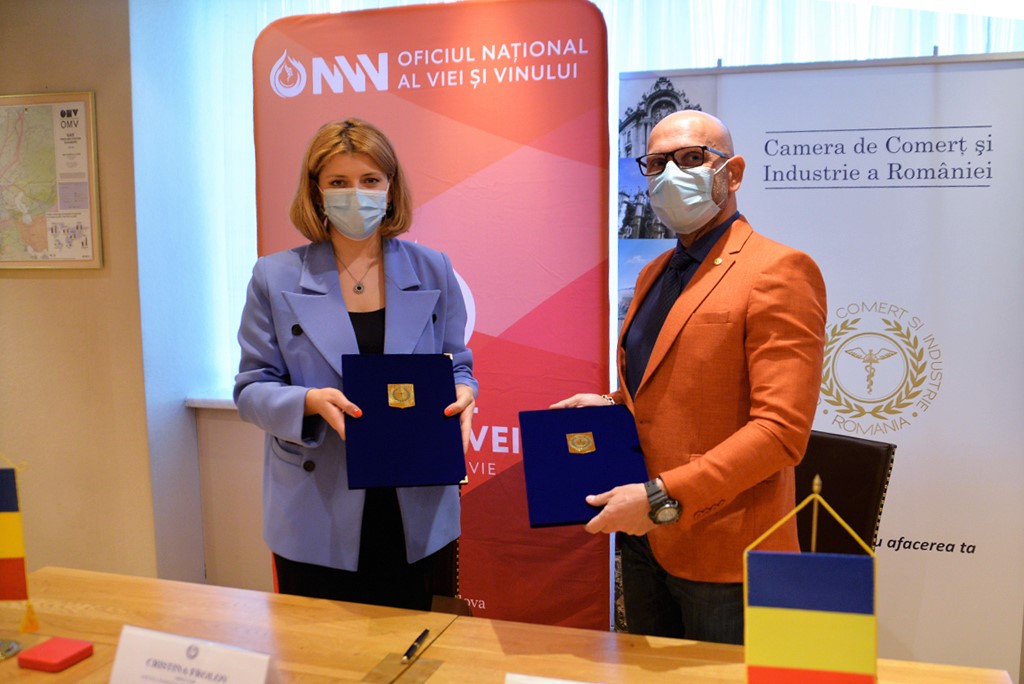
Source: ccir.ro
**
According to the data of the Romanian National Trade Register Office, the total value of Romania-Moldova trade was 1.7 billion euros at the end of last year and over 805 million euros at the end of May 2021. In July 2021, there were 6 522 companies from the Republic of Moldova in Romania, with a total capital value of 45.9 million euros.
The data of Moldova’s National Office of Vine and Wine showed that, in the first 7 months of 2021, the total quantity of bottled wine was about 27 million litres (registering an increase of 10% as compared to the same period last year), with a value of more than one billion lei, which is 32% more than the same period last year. Moldovan wines were awarded 956 medals at 32 international competitions in 2020.
Photo: ccir.ro
Economy
Moldova’s hope to be a top walnut exporter and its main difficulties
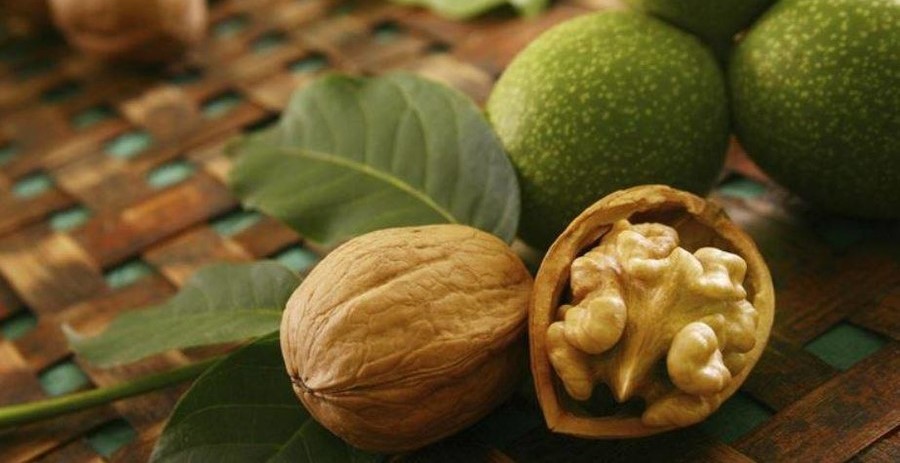
The Republic of Moldova has perfect weather conditions for growing walnut trees, that creating a great potential of walnut production and trade, especially on international markets, where the demand is way higher than the product’s supply. National and international experts believe that the country’s walnut production industry is on the verge of important transformations, which could lead to increased yields, quality and competitiveness worldwide.
According to authorities, Moldova exports 34-35 thousand tons of walnuts in shell, which is about 7% of the total export of fruit and 5% of the total export of horticultural products. The export value is assessed as being $120 million, that being 57-60% of the total fruit export value and about 50% of horticultural export value. Most of walnut crops are exported to the EU countries, such as France, Germany, the Netherlands, Romania and Austria. The country’s exports were among the world’s top 10 when it comes to the highest dollar value of the product during 2020.
Viorel Gherciu, Minister of Agriculture and Food Industry, pointed out that the production in the domestic walnut industry has increased by 55% in the last five years, which ranks Moldova among the main producers in the world.
“The biggest opportunity for this industry is that we are in the geographical proximity of the largest walnut import area in the world, which is the European Union, with almost 40% of total imports in the world. We are on the EU border, with privileged relations, with an Association Agreement. We already enjoy a good relationship in working with European importers, they trust our processors. A very close collaboration has been created and this is, in fact, the guarantee for those who invest in the area,” claimed the president of the Walnut Producers Association, Oleg Tirsina.
The data provided by the National Bureau of Statistics show that there are 34.7 thousand hectares of walnut plantations in the country. 20.90 hectares are represented by orchards. 75% of planted orchards are formed of old varieties trees. 30-35% of the exported production comes from orchards, the rest comes from individual farmers and plantations along the roads. This means that the quality of walnut production is not at its maximum potential. Developing commercial plantations through orchards modernization and extension of walnut varieties would provide double yield and better quality, experts say.
Governmental support in the form of subsidizing solutions, foreign investments and credit options are indispensable for the industry development. One of the financing options is the credit line of the European Investment Bank Project. Since 2016, 15 producers and processors of nuts, almonds and hazelnuts have benefited from these loans with the total amount of investments worth 8.7 million euros. A further extension of the project would provide another 60 million euros for the modernization of the horticultural sector in general and for harvesting organic walnuts in particular.
Photo: heymoldova.com


